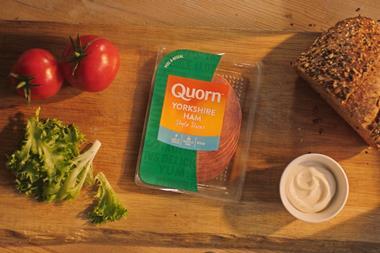
Quorn parent company Marlow Foods has announced plans to make its mycoprotein ingredient available to other food and beverage manufacturers.
The move will be led by a new division, Marlow Ingredients, and the mycoprotein will be made available firstly in Europe and then internationally.
The brand said there was “huge potential” for the ingredient, and it would be initially focusing on building partnerships with food manufacturers, but there was also opportunity beyond.
“We recognise the urgent need for humanity to eat more sustainably,” said Marco Bertacca, Marlow Foods CEO. “By making our mycoprotein available to others, Marlow Ingredients will play a pivotal role in helping us achieve one of our missions – to tackle climate change by making great-tasting food.”
Marlow Foods was established in the 1960s and after 20 years of research its mycoprotein was developed.
“Now, backed by decades of research, we know it is one of the best sources of protein there is,” added Bertacca.
Quorn and other industry leaders join forces to create Fungi Protein Association
Marlow mycoprotein is naturally high in protein, contains all nine essential amino acids, is low in saturated fat and contains several vitamins and minerals. It is also high in fibre and the brand says it uses 90% less land and water and said to produce 98% less carbon emissions than equivalent beef products.
The launch forms part of Quorn and Marlow Food’s mission to become a net positive business by 2030 and, in that year, provide eight billion servings of mycoprotein – one for every person on the planet.
It comes as activity is hotting up in the fungi sector, following the launch of a new trade body, the Fungi Protein Association, led by Quorn and including brands such as Nature’s Fynd, Enough, The Better Meat Co, The Protein Brewery, Prime Roots, Mycotechnology, Mycorena, ProVeg and the Good Food Institute.
The body was launched in November last year and intends to represent the interests of its member companies, including areas such as advocating for fungi protein in public policy and conducting consumer research.



![XOXO-Product-Shot[ALL FLAVOUR]-Sky-1920x1080](https://dmrqkbkq8el9i.cloudfront.net/Pictures/274x183/4/9/2/355492_xoxoproductshotallflavoursky1920x1080_806584_crop.jpg)










![XOXO-Product-Shot[ALL FLAVOUR]-Sky-1920x1080](https://dmrqkbkq8el9i.cloudfront.net/Pictures/380x253/4/9/2/355492_xoxoproductshotallflavoursky1920x1080_806584_crop.jpg)




No comments yet